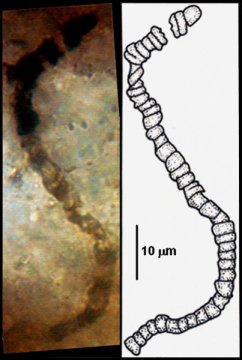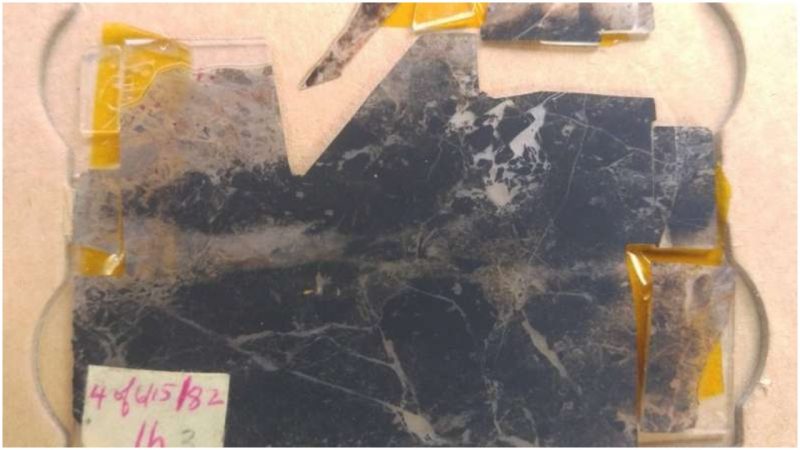The latest research findings by scientists catch traces of life on our planet going back roughly 3.5 billion years. A newly published study affirms the claim by analyzing 11 microbial samples coming from five distinct organisms. Scientists have used new technological instruments to prove that the retrieved samples had, once, been living microorganisms. They have managed to link the morphology of the microbes to their chemical signatures, and have proceeded to assign each specimen to a biological identity.
Some of the now-extinct specimens have been identified as belonging to the kingdom of single-celled microbes and bacteria known as Archaea, while other samples are similar to microbial life that thrives today. Given the age of the microfossils, these living organisms existed on the Earth when it was nothing like what we know today and was even devoid of oxygen.
The findings were delivered by researchers at UCLA and the University of Wisconsin-Madison, and were published on December 18, 2017, in the scientific journal Proceedings of the National Academy of Sciences. The research and study activities were led by UCLA’s professor of paleobiology, J. William Schopf, as well as University of Wisconsin-Madison’s professor of geoscience, John W. Valley.
The scientists have dubbed the specimens microfossils since they obviously cannot be seen by the naked eye. As Schopf clarified, the nature of the life forms are “a primitive, but diverse group of organisms.” To make things all the more exciting, such organisms, Schopf says, could be widespread across the universe.

Scientists say that already a few different types of microbes have been proven to be 3.5 billion years of age. Schopf says: “Life had to have begun substantially earlier–nobody knows how much earlier–and confirms it is not difficult for primitive life to form and to evolve into more advanced microorganisms.”
Some of the identified specimens are phototrophic bacteria, which would have made use of the sun to produce energy. In the case of the Archaea, they did produce methane, while another identified specimen, gammaproteobacteria, would have nurtured itself with the same gas. Furthermore, it is deemed that methane was a significant ingredient in the composition the early atmosphere of Earth.
The microbes are about 10 micrometers in size, about an eighth of the width of a human hair. The first instance in which they were mentioned was in 1993, also by a team of scientists led by Schopf. Back then, the microfossils were identified principally to the authentic shapes (cylindrical or filamentous) which they had retained, and the news was shared in the journal Science. Schopf, who is also the director of the Center for the Study of Evolution and the Origin of Life at UCLA, has issued further details backing up evidence that the microfossils were of biological prominence in 2002.
Schopf has been devoted to finding out more about these forms ever since he had the specimens retrieved from a 3.5 billion-year-old deposit of rock in Western Australia in 1982. The location of the rock itself is rare on Earth, providing significant geological insight, and exceptional as it has managed to sustain itself, safe and sound from plate-tectonic activities. However, the early interpretations of Schopf on the subject were disregarded by a number of critics who argued that the fossils are instead evidence of an unusual set of minerals.
According to Valley, there isn’t a shadow of doubt after the latest study, which only affirms that these “primordial remnants” are of biological nature. “I think it’s settled,” he said.
Valley, along with his team, used a secondary ion mass spectrometer, or SIMS. This rare instrument has helped the group gather enough information, based on which they have managed in separating the carbon that is consisted in each microfossil to its constituent isotope, hence measuring their ratios. After which, scientists have been able to designate identities and identify behaviors to the forms that had remained trapped in the rock deposit.
Valley’s team has reportedly taken almost a decade to successfully establish the processes that only now offered them a precise analysis of the microfossils, as fossils as ancient as these have never in the past been handled for a SIMS analysis.
Valley and his team have previously delivered another important finding. In 2001, they revealed that, as early as 4.3 billion years ago, our Earth had oceans of water. That means there was water on Earth millions of years before the existence of the microfossils subjected to the present-day study, and that water appeared just roughly 250 million years following the formation of Earth. Valley explains more on this subject, saying: “We have no direct evidence that life existed 4.3 billion years ago but there is no reason why it couldn’t have.” He also adds: “This is something we all would like to find out.”
Reflecting on the demands of the entire research effort, Valley remarked: “This study was 10 times more time-consuming and more difficult than I first imagined, but it came to fruition because of many dedicated people who have been excited about this since day one… I think a lot more microfossil analyses will be made on samples of Earth and possibly from other planetary bodies.”
The findings delivered from the teams of Schopf and Valley are coming simultaneously with another exciting announcement made by another group of scientists, also in December 2017 and published in the journal Nature.
Related story from us: The perfect pets: An ancient-DNA study shows how cats domesticated themselves
According to it, a recently identified bacteria in the Antarctic retains some extraordinary capabilities, namely being able to sustain life by taking advantage of only traces of gases found in the air, such as carbon monoxide and hydrogen.
